For those looking to get into photography, or perhaps looking for a refresher, it is important to know there is much to consider when taking pictures. The choice of style, the techniques used to capture your subject, the best way to practice your new found skills, and so much more will be explored in this article.
Photography is a long-standing artistic venture, capable of creating a single image that makes the viewer stop and stare in wonder. You can keep this skill as a hobby, but there is also an illustrious career waiting for you out there! News outlets, the fashion industry, and even weddings all require the work of a photographer. With some time, study and practice, you can create art from the world around you!
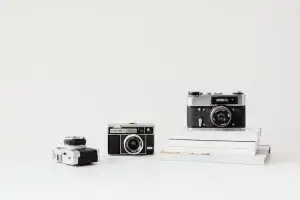
How Do You Learn Photography?
For those looking to learn photography, whether it is as a hobby or as a career, it can be hard to know where to start. In this modern age of digital photography, it is incredibly easy to snap an image, aided by the automatic camera settings included in your personal devices. While most people do this casually to capture the world around them and ongoing life events, this can also be a means of getting yourself started on your path to professional photography.
There is no wrong place to start when wanting to learn how to use a camera. In fact, there are several ways to learn photography, and the best method for you will depend on your personal learning style and goals.
Here are a few options to consider:
- Online courses: There are several online courses and tutorials available that can teach you the basics of photography, while also helping you improve your skills. These courses can be self-paced, while also being a convenient and affordable way to learn. Often local arts or community centres offer online courses, or you may find a professional photographer you admire also offer tutelage. By following along with these digital lessons, you can get a clear idea of where your photography journey should head.
- Books: Reading and studying books can be a great way to learn both the craft of photography at your own pace. Looking at the images of your favourite photographers is also a great way to know what style you want to focus on. Whether that is something as broad as focusing on wildlife photography, or just learning how to create motion blur in your photos.
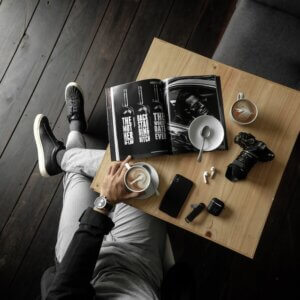
- Workshops and classes: You might consider taking a workshop or class to learn photography if you are interested in a more structured setting. Many community colleges and adult education centres offer photography classes, as do many professional photographers.
- Practice: The best way to learn anything is to do it, so get out there and start taking photos! Experiment with different settings, subjects, and compositions to see what works best for you. You can also try different mediums to capture your images with. Using a digital camera is common in photography nowadays, but you can always try other cameras, or even delve into video and editing.
- Seek out critiques: As you improve, it can be helpful to seek out critiques of your work from other photographers or professionals. This can help you identify areas for improvement and provide valuable feedback. However, if you are just starting out, it can be wracking to show off your work. Begin by showing your family or friends your work until you are comfortable reaching out to professional critics. Some encouraging words from those around you can go a long way to boosting your confidence!
Top Photographic Techniques
For those invested in developing photography as a skill or career, photography is not as simple as finding a subject and snapping a picture of it. There are many techniques to choose from in order to capture and create compelling images.
Background
A photography background refers to the environment behind the image’s focus. This aspect of a photograph is just as important as its subject since it aids in creating the photographer’s intended atmosphere. While it is not uncommon for backgrounds to be the natural surroundings of the image’s focus, some photographers use a physical background to replicate an environment of their choosing.
For physical backgrounds, photographers can use various different types of materials, like: seamless paper, muslin, or even a blank wall. The choice of background will depend on the desired aesthetic and the requirements of the photo shoot, and often utilises lighting and props to further develop this design. Some photographers may also use a green screen, later replacing the background with a digitally created image using editing software.
Furthermore, photographers may choose to blur the background to draw attention to the main subject. Otherwise, they may keep the background in focus to include more context and add depth to the image. There are plenty more background techniques to explore for yourself, even those simple enough for beginner photographers to attempt.
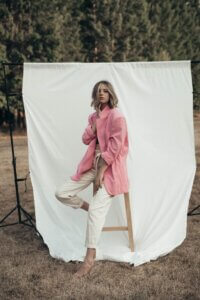
Composition
The way that the elements in a photograph are arranged can greatly impact the effectiveness of the image. While your main subject is important to highlight, composing a photo goes beyond indicating what your focus is. To create a visually stunning shot, you need to choose what kind of compositional techniques your camera lens must use.
These techniques include:
- The rule of thirds: After mentally creating a three-by-three grid across your chosen scene, you should capture compositional elements where these lines intersect. This creates a more expansive scene that captures the human eye on several elements, rather than focusing just on the main subject.
- Leading lines, focus, and depth of field: To create a sense of space and dimension, you can use leading lines to draw the viewer’s attention towards a focal point. This, along with manipulating the focal length and depth of field gives your photo depth and dimension.
- Balancing images: Creating symmetry within your image is aesthetically appealing, but balanced images can encourage viewers to create parallels and their own dialogue. The quadrants of the image will not mirror each other, but rather compliment, using aspects like negative space or colour.
- The right point of view: Composition can be changed greatly by changing perspectives on the main subject. This can be done with spacing or distance.
Lighting
Proper lighting is crucial for creating high-quality photographs. Choosing what type of light source you want for your photo is just as important as ensuring there is enough light to highlight your subject. You can choose between natural light, artificial light, or a combination of both to achieve the desired effect.
While it may be more difficult to control the lighting conditions of an outdoor setting, finding an area with a light sensitive surface can manipulate your subject’s shadows. Additionally, low light or high exposure can help you create a more visually interesting image, whether this is naturally or artificially created.
Exposure
Not to be confused with lighting, a photograph’s exposure refers to the amount of light that the camera sensor receives. This manipulates how bright or dark your pictures appear, and is affected by digital camera settings like aperture, ISO and shutter speed. Prolonged exposure is a unique skill of digital cameras that creates physical lines of light, allowing for images to have an ethereal effect.

Focus
The focus of a photograph refers to which parts of the image are sharp and which are blurry. Photographers can control the focus of an image by adjusting the aperture and using techniques like selective focus. Your picture’s depth of field can even be manipulated by changing the exposure, as well as various other significant aspects that create an aesthetic image.
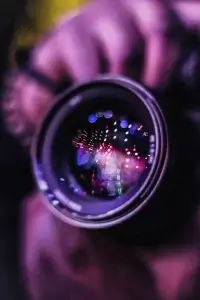
Post-processing
In the post-production process, photographers often use image editing software to adjust photos’ aspects like colours and contrast. This is known as post-processing, and once was restricted to airbrushing; either softening an image or removing something entirely. Nowadays, digital photography has expanded the photographic techniques available for post-processing, allowing you to enhance the essential elements and overall feel of the photograph.
Careers in Photography
If you are interested in expanding your photography hobby into a career, there are several paths you can choose from. Each has their own exciting qualities, and will allow you the chance to explore different styles and subjects. The possibilities are endless!
Using either film or digital cameras, you can delve into any photography career, including:
Freelance Photography
Perhaps one of the most commonly known careers in photography, freelance allows you to be self-employed or contracted to a client.
In the case of being contracted, you will be taking pictures to the client’s specifications. This will allow you the chance to explore various different subjects and styles, ranging from stationary subjects to capturing digital images for marketing. With some time and success, you can become a well-known face in the professional photography world.
In contrast, being self-employed allows you the freedom to choose what you want to focus your camera lens on. The pictures can be in any style you choose, and you may decide to spend some time focusing on portrait photography before moving onto a new muse. It may be difficult for beginner photographers to break onto the scene, but through persistence and some self-advertising, you can start selling your photographs to the public.
Photojournalist
Often included within freelance photography, photojournalism involves capturing pictures of events and people to be used in news publications. While it is most commonly used for magazines, online publications and news outlets, social documentary photography has also made use of pictures and video from photojournalists. This career often draws people interested in capturing events happening around them.
Fashion Photography
A fairly creative and artistic role, taking photos of fashion not allows you to focus on emphasising the appeal of clothing, but also in creating a compelling scene. This competitive role can be done within studios, on runways, or at an outdoor photoshoot. It is also makes great use of different photography styles, including portrait or black and white photography
Fashion photography also includes excellent people skills to book events and network with other professionals. At some points, you may have to extensively bargain or offer your services for free to showcase your talents to designers and models alike.
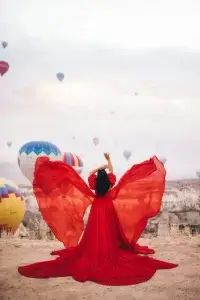
Commercial Photography
Photographers working in commercialism exclusively takes images for marketing products and services. They are necessary in any industry, and often have their work shown in advertisements, websites and catalogues, or across social media platforms.
Due to the nature of advertising, you will often get the chance to work on techniques like your compositions and backgrounds. You may also get the chance to utilise unique styles like macro photography, where small subjects become almost life-sized through your images. The nature of the industry means that you will get the chance to collaborate with several different clients, therefore taking on the challenge of creating various visions.
Wedding Photography
For those interested in capturing one particular subject in photographs, you want to get into wedding photography. It may be a niche industry to venture into, but a wedding photographer is almost always in high demand. It is a job that involves being quick on your feet and invested in the atmosphere enough to capture that perfect shot.
To be a wedding photographer, you must be ready to adapt to new lighting and diverse weather conditions. Your camera settings are more important than ever as post-production work may be a great way to edit photos, but initially getting the right shot can create far better photos.
Recommended Photographers –
– Wedding Photographers Sydney
– Wedding Photographers Melbourne
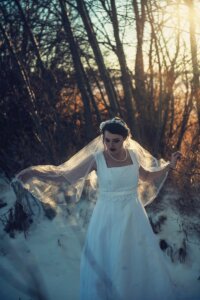
Depending on your client’s interests, you may also require skills in portrait photography. While photographs of a wedding’s events can create a real image of the environment, sometimes clients want a more intimate and detailed look into their special day. Portraits allow photos to capture the essence of a person, and taking pictures of the happy couple can be a great way to both flex your skills and delight your client.
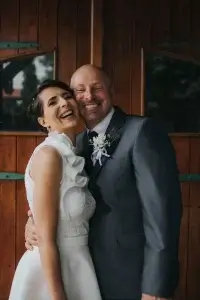
Furthermore, your client may want to try out more unique styles of photography to make their special day stand out more. Black and white photography is a common style used to encapsulate an intimate moment, but changing the perspective to aerial shots can also allow for composition to be played with to great effect.
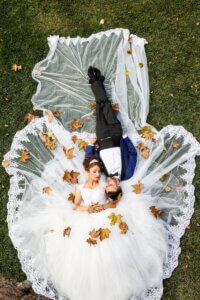
In the case of more ambitious clients, you may also get the chance to attempt non digital photography. Using the styles of film or stereoscopic photography brings your photos back to the analogue era, especially the way in which light and colour is developed. Through the use of analogue cameras, you can ensure your client’s photos can make full use of their environment’s lighting, while also embellishing any details on their wedding gowns and tuxes.
Top Photography FAQS
When was Photography Invented?
Photography has been around since ancient times in some form or another, but the first permanent photograph was made in 1826 by Joseph Nicéphore Niépce. Back then, black and white photography was the only style achievable, and was created by using a process called heliography. This process involved coating a metal plate with a light-sensitive chemical and exposing it to light. Delightfully enough, the plate was then washed with oil of lavender, which dissolved the parts of the coating that had not been exposed to light, creating the first permanent photograph.
The photograph in question, known as “View from the Window at Le Gras,” shows the view from Niépce’s window in Burgundy, France. From the time this picture was taken, photography has made great strides in development, easily accessible to anyone who wants to capture the world around them.
What is Contrast?
Contrast in photography refers to the difference in light intensity; namely, between the lightest and darkest areas of an image. High-contrast images will have a large difference between the light and dark areas, while low-contrast images have a much smaller one. This contrast even extends to the photo’s colours and tone, which can be made to be striking or muted to almost nothing.
You can adjust the contrast of a photograph by making changes to the exposure settings on the camera, or by using image editing software in the post-production process. Increasing contrast can make an image appear more dramatic withs surreal colours, and can help to draw attention to the main subject. In return, decreasing contrast can give an image a more subtle, subdued look. It also highlights the whites of a photo, making a scene look almost ghostly and ethereal.
What is Negative Space in Photography?
In photography, negative space refers to the area around the main subjects of an image, helping to define it. It is often used to create balance and visual interest in an image, while also creating focal lines to the main subject. The balance of a negative image can be created by using elements such as empty-looking areas, open backgrounds, or the use of light and shadow.

What is Shutter Speed Photography?
In photography, the shutter speed refers to the length of time that the camera’s shutter is open when taking a photograph. It is typically measured in fractions of a second. With a slower speed, you can illuminate even the darkest of scenes as more light is allowed through the lens. Increasing the speed, however, prevents most light from entering the lens, creating a darker scene.
While the shutter speed determines how much light is allowed to reach the camera’s sensor, it also plays a role in how motion is captured in an image. For example, a fast shutter speed of 1/1000th of a second can freeze fast-moving action, while a slower shutter speed of 1/30th of a second can create a blurry, ethereal effect for moving objects. Depending on the vision you have for your art, or your job, the right camera for you may also hinge on its shutter speed.
To control this speed, you typically need to alter the camera’s exposure settings, which can be adjusted to achieve a desired balance of light and motion in an image. It is often used in combination with aperture and ISO to achieve the desired exposure for a photograph, which may take some time and practice to achieve.
Best Digital Cameras Currently on the Market?
For those beginners looking to get into the photography, choosing your first digital camera can be tricky if you do not know what you are looking for. The best one for you will always depend on your specific needs and budget, but we have included a list highly rated options that are popular among photographers. This way, you can get started on your journey to obtaining the best camera for you.
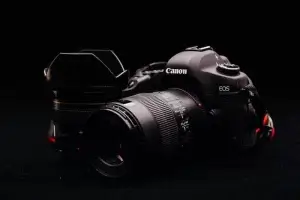
These options include:
- Canon EOS R5: A full-frame mirrorless camera known for impressive image quality and a near-instantaneous autofocus. It is suitable for a whole range of photography styles, while also containing strong video capabilities for those interested in capturing moving subjects.
- Nikon Z7 II: Another top-rated full-frame mirrorless camera, this model boasts excellent image quality and a robust set of features. It is best suited for both still photography and video.
- Sony a7S III: Highly regarded for its ease in capturing light sensitive material and video in low light, this versatile camera is a popular choice for those that need to handle a variety of shooting situations.
- Fujifilm X-T4: A hybrid camera that suits capturing both still and motion imagery. It has a strong autofocus system and is capable of in-body stabilisation. Perfect for those trying to capture images while on the go.
- Olympus OM-D E-M1 Mark III: A popular choice for journalists, as well as action and sports photographers, mainly due to its fast autofocus and high-speed continuous shooting. It also has strong image stabilisation and is weather-sealed for outdoor use.
